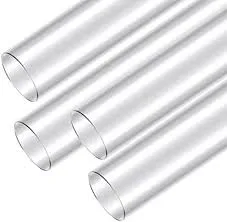Oct . 17, 2024 04:44 Back to list
hdpe irrigation pipe fittings
Understanding HDPE Irrigation Pipe Fittings
High-Density Polyethylene (HDPE) pipes are widely used in irrigation systems due to their exceptional strength, durability, and resistance to corrosion. When it comes to installing and maintaining an irrigation setup, the choice of fittings is just as crucial as the pipes themselves. HDPE irrigation pipe fittings are essential components that facilitate the seamless connection of pipes, ensuring efficient water distribution across agricultural areas and gardens. This article delves into the importance of HDPE irrigation pipe fittings, their types, and best practices for installation.
Why Choose HDPE?
HDPE is a preferred material for irrigation pipes because of its lightweight nature, high tensile strength, and resilience against harsh weather conditions. Additionally, HDPE is resistant to chemicals, which makes it suitable for various types of irrigation systems, including drip, sprinkler, and subsurface irrigation. The flexibility and ability to withstand environmental stress make HDPE a versatile choice for farmers and landscapers alike.
Types of HDPE Irrigation Pipe Fittings
1. Couplings Couplings are used to connect two lengths of HDPE pipe. They ensure a tight seal, preventing leaks that could waste water and impact soil moisture levels. Available in various diameters, couplings are integral in expanding the irrigation system or repairing damaged sections of piping.
2. Tees Tee fittings allow for the branching of the irrigation system, directing water to different areas simultaneously. They come in various configurations, such as straight tees, reducing tees, and lateral tees, each serving specific layout requirements.
3. Elbows Elbow fittings are crucial when a change in direction is needed within the piping system. They are typically available in 45-degree and 90-degree angles, making it easier to navigate around obstacles or to adjust the layout of the irrigation network.
4. End Caps End caps are used to seal off the ends of pipes, which is particularly useful when a section is taken out of service or for future expansion. They help maintain pressure within the system while preventing dirt and debris from entering the pipe.
hdpe irrigation pipe fittings

5. Adapters and Flanges Adapters are necessary for connecting HDPE pipes to other materials or pipe types, while flanges facilitate connections that may require frequent disassembly.
Installation Best Practices
Proper installation of HDPE irrigation pipe fittings is essential for long-term system performance. Here are some tips
- Cutting Pipes Carefully Ensure that pipes are cut straight and clean to ensure a proper fit with fittings. Using a proper cutting tool prevents edge damage that could lead to leaks.
- Proper Lubrication Use compatible lubricants to ease the insertion of the fittings into the pipes. This helps in achieving a secure fit and reduces the risk of tearing.
- Heating for Flexibility In cold weather conditions, heating the ends of HDPE pipes can make them more flexible, allowing for easier installation and reducing stress on the fittings.
- Testing for Leaks After installation, thoroughly test the system by pressurizing it and checking joints for leaks. This ensures that any issues can be identified and addressed immediately.
In conclusion, HDPE irrigation pipe fittings play a vital role in the efficiency and effectiveness of irrigation systems. By understanding the various types of fittings and following best installation practices, users can ensure a reliable watering system that promotes healthy plant growth and resource conservation. Whether for agricultural use or garden landscaping, HDPE fittings stand out as a reliable choice for optimal irrigation management.
-
PVC Transparent Sheet Roll - Durable & Flexible PVC Plastic Sheet Roll for Industrial & Home Use
NewsJun.24,2025
-
High-Quality PVC PPR Pipes and Fittings Durable ERA PPR Solutions
NewsJun.10,2025
-
High-Quality Large HDPE Sheets & Large Diameter PVC Pipe Durable Large PVC Pipe Supplier
NewsJun.10,2025
-
High Density Polyethylene Cutting Board - Durable & Food Safe
NewsJun.09,2025
-
3 Inch PVC Pipe for Durable Irrigation Affordable & Reliable
NewsJun.09,2025
-
Premium PPR Plastic Water Pipe Fittings - Durable & Leak-Free
NewsJun.09,2025

